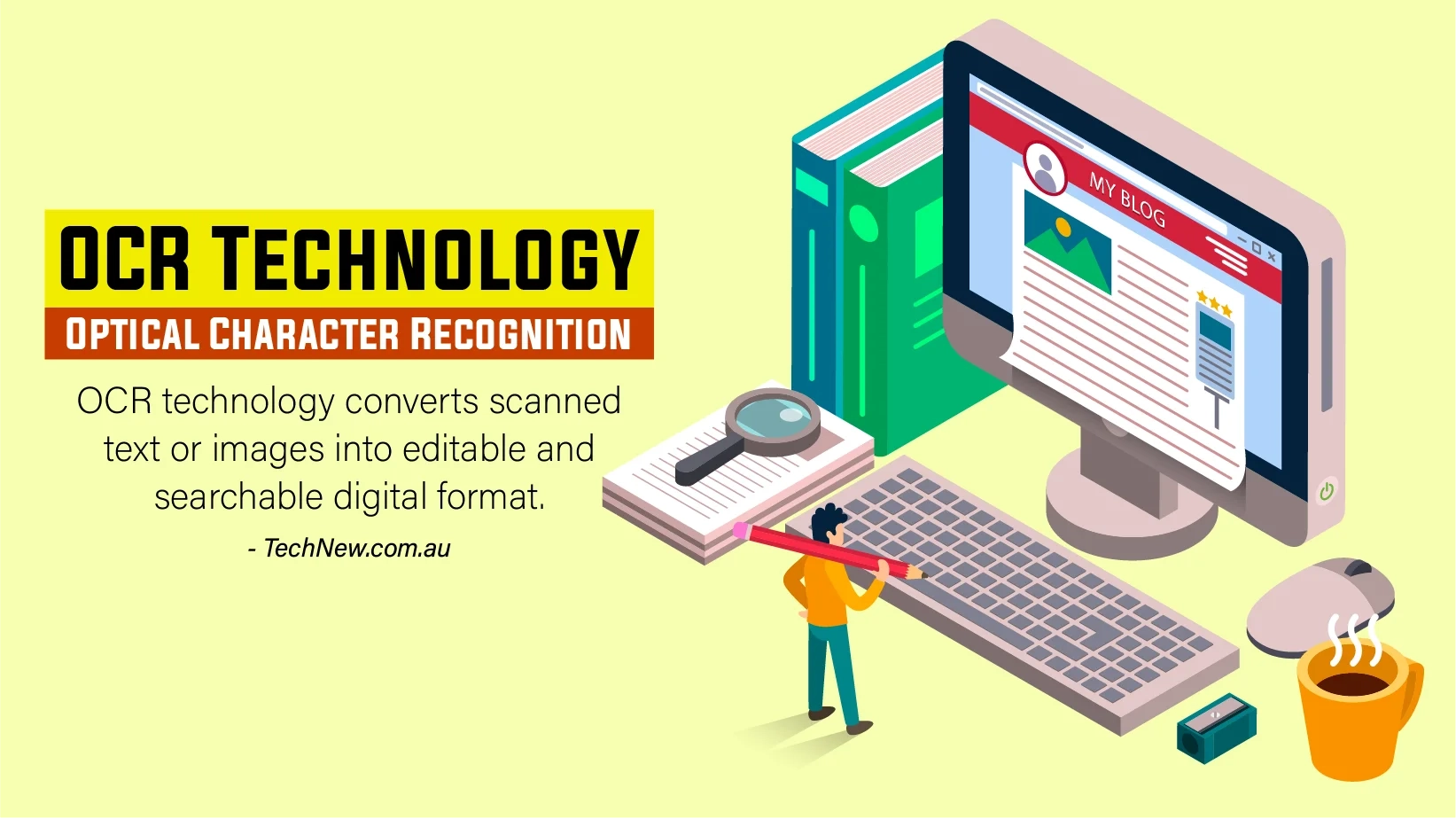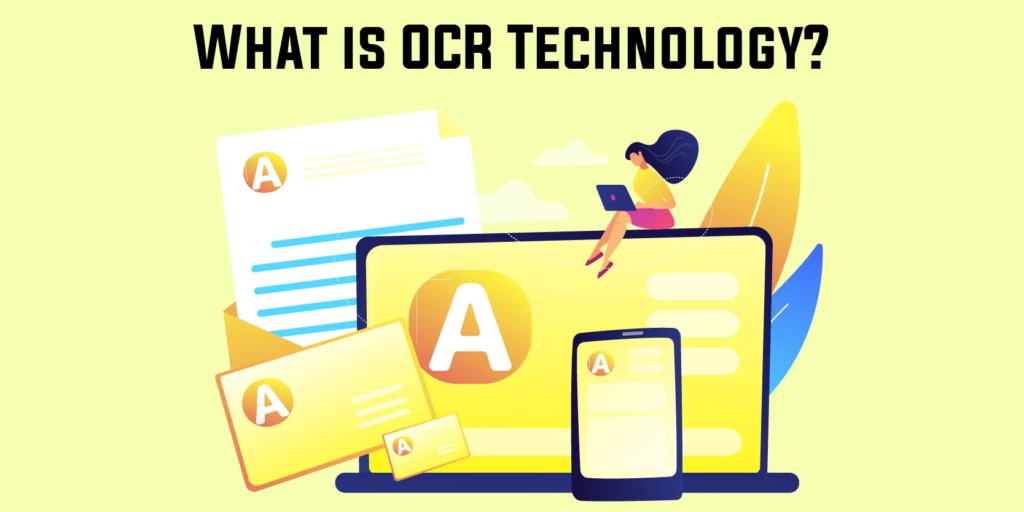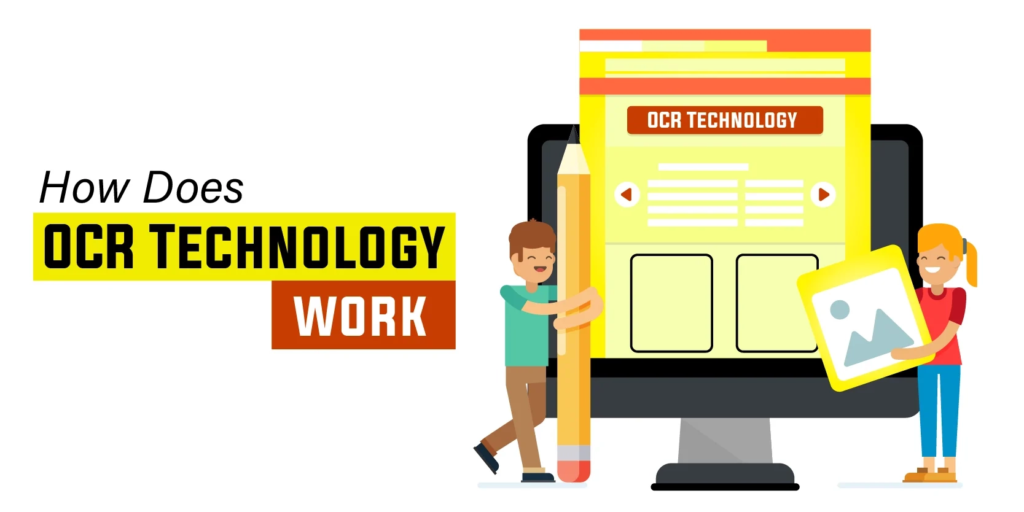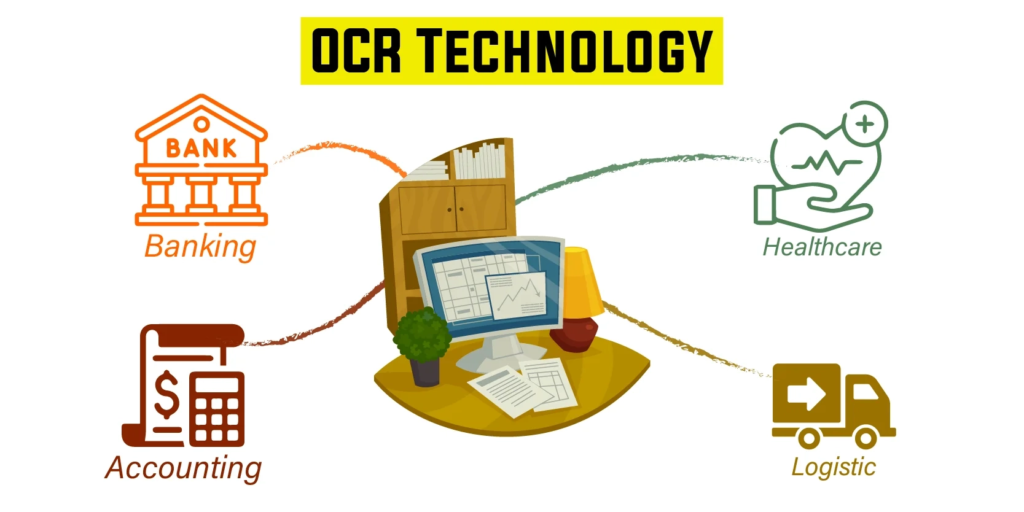How does OCR Technology Simplify Data Extraction from Scanned Documents?

| Optical Character Recognition Technology converts scanned text or images into editable and searchable digital format. |
Imagine being buried under a mountain of paperwork, struggling to decode handwritten notes and extract vital information. It’s a boring and time-consuming task that drains your energy and interrupts productivity. But what if you could simply wave a wand and see those documents turn into text you can edit and search in the blink? Enter Optical Character Recognition Technology powered by artificial intelligence. It’s a game-changer that transforms data extraction from scanned documents. It’s the magic that revolutionizes the way businesses handle data extraction from scanned documents. Curious to learn more? Explore the sections below and the mysteries of Optical Character Recognition Technology.
What is Optical Character Recognition Technology?

| OCR, or Optical Character Recognition, is a technology that converts images of text into editable and searchable text documents. |
Optical Character Recognition Technology, short for Optical Character Recognition, is a smart tool that helps computers understand text from scanned documents or images. Let’s say you have a paper with some writing on it. If you scan that paper, your computer saves it as a picture rather than as words you can work with. But with ocr scanning technology, it’s like teaching your computer to read – it turns the image of the text into actual text that your computer can understand. Meanwhile, Poor writing costs American businesses nearly $400 billion annually.
What does OCR Software Do?
| OCR takes pictures of words and turns them into real, usable text. |
Well, imagine you have a receipt from a store. Instead of just being a picture of the receipt, OCR software can turn it into a document with all the text written out. This means you can now use your computer to search for specific words on the receipt. You can also edit the text or count how many times a word appears.
How does OCR Technology Work?

Imagine you’re scanning a document. The scanner takes a picture of the page, turning it into a digital image. But computers can’t read images like we do – they need text. That’s where OCR comes in! It looks at the picture, figures out which parts are letters, and turns them into text your computer can understand. Here’s how it works in simple terms:
1. Capture the Image:
First, a scanner takes a picture of a paper document and turns it into a virtual image. This photograph is generally black and white, which makes it easier for the laptop to distinguish between the background and the textual content.
2. Cleaning Up:
Next, the Optical Character Recognition Technology looks at the image and fixes any mistakes. It might straighten out crooked text, make the picture clearer, or separate the text from the background to make it easier to read.
3. Recognizing the Text:
Now comes the cool part – the OCR software reads the text from the image. It uses smart algorithms to figure out what the letters and words are, even if the text is handwritten.
4. Making it Usable:
Finally, the OCR software program turns the text it reads into a record you can work with for your computer. You can edit the textual content, look for unique words, or copy and paste it into any other document.
In short, OCR technologies take pictures of text and turn them into real. Meanwhile, it makes a usable document that your computer can understand. It’s like teaching your computer to read, and it’s super handy for dealing with scanned documents or images.
Types of Optical Character Recognition Technology:
| OCR (Optical Character Recognition) | Converts printed text into digital form. |
| OWR (Optical Word Recognition) | Similar to OCR, it focuses on recognizing individual words. |
| OMR (Optical Mark Recognition) | Analyzes marks, symbols, and patterns on documents. |
| ICR (Intelligent Character Recognition) | Reads handwritten textual content and converts it into virtual form through system studying and AI technology. |
| In simple terms, each type of Optical Character Recognition Technology has unique skills for understanding and processing different kinds of text and symbols on paper documents. |
Use of Optical Character Recognition Technology Across Industries:

OCR, or Optical Character Recognition, is like a digital assistant that helps businesses in various industries process paperwork faster and more accurately. Here are some common ways OCR is used to simplify data extraction:
- Banking
- Healthcare
- Logistic
- Accounting
1. Optical Character Recognition Technology in Banking:
OCR handles paperwork for loans, checks, and other financial transactions in banking. This helps prevent fraud and keeps transactions secure. For example, during the COVID-19 pandemic, BlueVine used OCR to quickly process loan forms for small businesses, saving thousands of jobs.
- OCR prevents fraud and keeps transactions secure by accurately processing documents.
- It enables banks to process paperwork faster.
2. Optical Character Recognition Technology in Healthcare:
OCR software manages patient information in healthcare, including treatments, tests, and insurance claims. This simplifies patient data management for hospitals and reduces manual labour. For instance, the Nib Group employs OCR to expedite medical claims processing, ensuring quicker client reimbursement. Integrating OCR with health technologies streamlines administrative tasks, enhancing efficiency and improving patient care.
- The OCR app streamlines patient records management, making healthcare processes more efficient.
- OCR guidance tracking technology reduces the likelihood of errors in patient records, ensuring that healthcare providers have accurate information when making treatment decisions.
3. Optical Character Recognition Technology in Logistics:
Logistics agencies use OCR to tune package deal labels, invoices, and receipts efficiently. For instance, the Foresight Group uses OCR to automate your bill processing, saving time and lowering mistakes in their accounting systems.
- OCR automates boring tasks like invoice processing, allowing logistics companies to focus on other aspects of their operations.
- It ensures greater accuracy in tracking packages and managing inventory, leading to smoother logistics operations.
4. OCR Technology in Accounting:
Staying on top of financial records is paramount for agencies to thrive in accounting. Enter OCR (Optical Character Recognition) generation, a powerful ally to automated software that streamlines procedures, enhances accuracy, and boosts performance in accounting tasks. U.S. Groups incurred nearly $7 billion in IRS civil consequences because of mishandling information and spreadsheet mistakes.
Thus, From invoice processing to expense management, OCR revolutionizes traditional accounting practices. It enables businesses to automate complicated tasks and confidently make informed financial decisions.
- Incorrect tax data entry leads to 27% of accounting errors. Thus, the latest Optical Character Recognition Technology automates invoice data extraction, saving time. It ensures accuracy in recording vendor details and invoice amounts.
- Digitizing receipts with OCR simplifies expense tracking and reporting. OCR software makes it easy to monitor company spending.
- OCR technologies extract transaction details and account balances from bank statements.
In simple terms, OCR app helps businesses handle paperwork faster and more accurately, making their operations run smoother.
Benefits of OCR Technology:
| Benefits | Description |
| Simplified Text Recognition: | Imagine effortlessly converting printed documents into editable digital text! With OCR, you can easily recognize image text, making searching, editing, and using it a breeze. |
| Intelligent Character Recognition (ICR): | Say goodbye to manual data entry! With ICR, your computer learns to read text like a human, making data extraction lightning-fast and accurate. It’s like having a super-smart assistant by your side! |
| Intelligent Word Recognition: | Want to speed up document processing? Intelligent word recognition does just that! By recognizing entire words instead of individual characters, OCR makes extracting information from documents quicker and more efficient. |
| Optical Mark Recognition (OMR): | Need to identify logos or symbols in documents? OMR has got you covered! Whether it’s watermarks or text symbols, OCR can recognize them all, making document analysis a breeze. |
| Searchable Text: | Searching for specific information in a document archive? You can easily convert documents into searchable files with OCR guidance tracking technology. It makes it simple to find precisely what you need when you need it. |
| Operational Efficiency: | Want to streamline your workflows? It automates document processes, saving you time and effort. OCR technologies make your tasks easier and more efficient, from scanning hand-filled forms to converting handwritten notes into editable text. |
Critical Analysis of OCR Technology:
Information Accessibility:
Imagine quickly finding, viewing, and editing digital files with a few clicks. That’s what Optical Character Recognition Technology allows businesses to do. Whether it’s locating receipts, contracts, or financial statements. OCR makes accessing and working with these documents an easy task. But it’s not all smooth sailing. OCR may need help decoding handwritten or complex text, posing a challenge for accurate data extraction.
Reinforced Data Security:
With OCR, not only do you get improved accessibility, but you also get an added layer of security. Take the banking sector, for instance. OCR helps digitize paperwork more accurately, reducing the chances of fraud or identity theft.
However, ensuring that your OCR systems are secure and protected against potential data breaches or cyberattacks is crucial.
Operational Efficiency:
OCR software is your efficiency booster, helping streamline operations and automate workflows. Say goodbye to the days of rummaging through physical documents or spending hours on manual tasks. With OCR, you’ll spend less time accessing, sharing, and storing documents, leading to increased efficiency and cost savings. But, integrating OCR into existing workflows has its challenges. You may encounter compatibility issues or the need for employee training, so it’s essential to tread carefully.
Integration Considerations:
Integrating OCR into your workflows requires careful planning and consideration. Start by assessing your contemporary techniques and identifying areas wherein OCR can add value. Choose an OCR answer that suits your business desires and spend money on employee schooling to ensure all sundry can use it efficiently. By taking these steps, you’ll be capable of seamlessly maximizing the benefits of the OCR era and streamlining your record management processes.
OCR Challenges and Limitations:
When you rely on OCR generation to extract records from scanned files, you must recognize its barriers. For example, OCR can also want help to correctly apprehend handwritten or poorly scanned textual content, which can lead to errors in information extraction. This manner that despite Docparser performance, OCR is not infallible and may require your intervention for accurate results.
Moreover, if you depend too heavily on OCR without verifying the extracted statistics, you are in danger of using incorrect or incomplete records for choice-making. This ought to affect your commercial enterprise operations and outcomes. Therefore, it’s essential to implement OCR cautiously and ensure it enhances your present techniques instead of replacing them.
FAQs:
What is OCR technology?
How does OCR work?
What are the benefits of Optical Character Recognition Technology?
Where are OCR technologies commonly used?
Are there any limitations to OCR technology?
How can businesses implement OCR technologies effectively?
Final Verdict:
Optical Character Recognition Technology provides a promising solution for streamlining data extraction techniques across industries. Its capacity to improve data accessibility, beef up records protection, and increase operational efficiency is simple. However, it’s essential to acknowledge Docparser limitations, such as challenges in accurately recognizing handwritten or poorly scanned text. Thus, you must implement OCR carefully, ensuring the correct verification procedures and considering compatibility with current structures to maximize its benefits while mitigating potential drawbacks.

Similar Posts
Why Is ApkgStore the Go-To Hub for Free Online Games and Apps?
Does HQPotner Truly Simplify Business Operations?
Navigating the Oracle Financials 24A Release